THE
CATHEDRAL
As
is sometimes our custom, we shall commence a serialization of views,
as we walk towards the Cathedral.
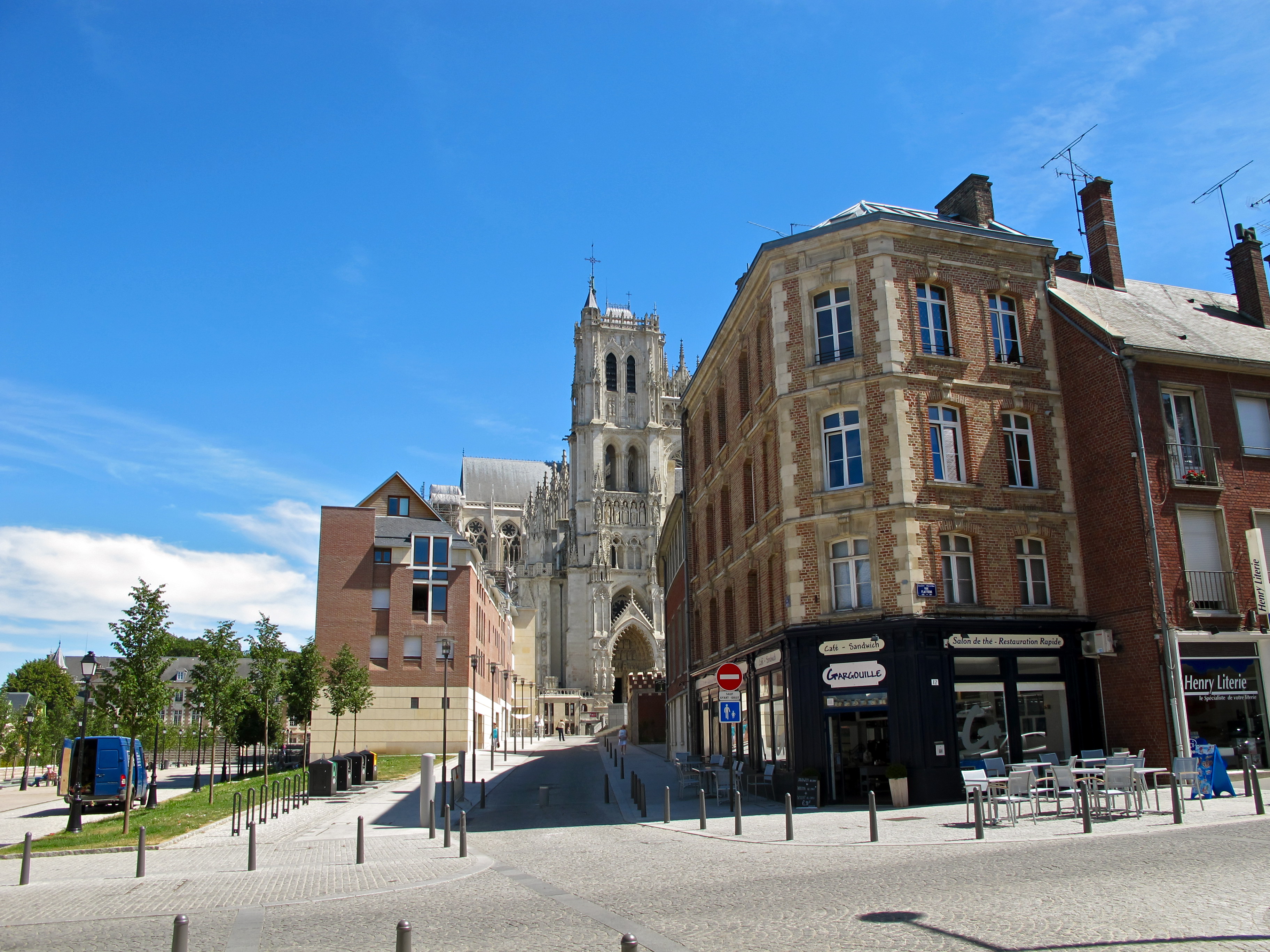
Difficult
if not impossible to know if such a view was planned. As in so many
monuments we never get a full glimpse of the building until we are
literally face to face. It is sort of like a visual tease, this
glimpsing of a fragment, which only heightens our approach.
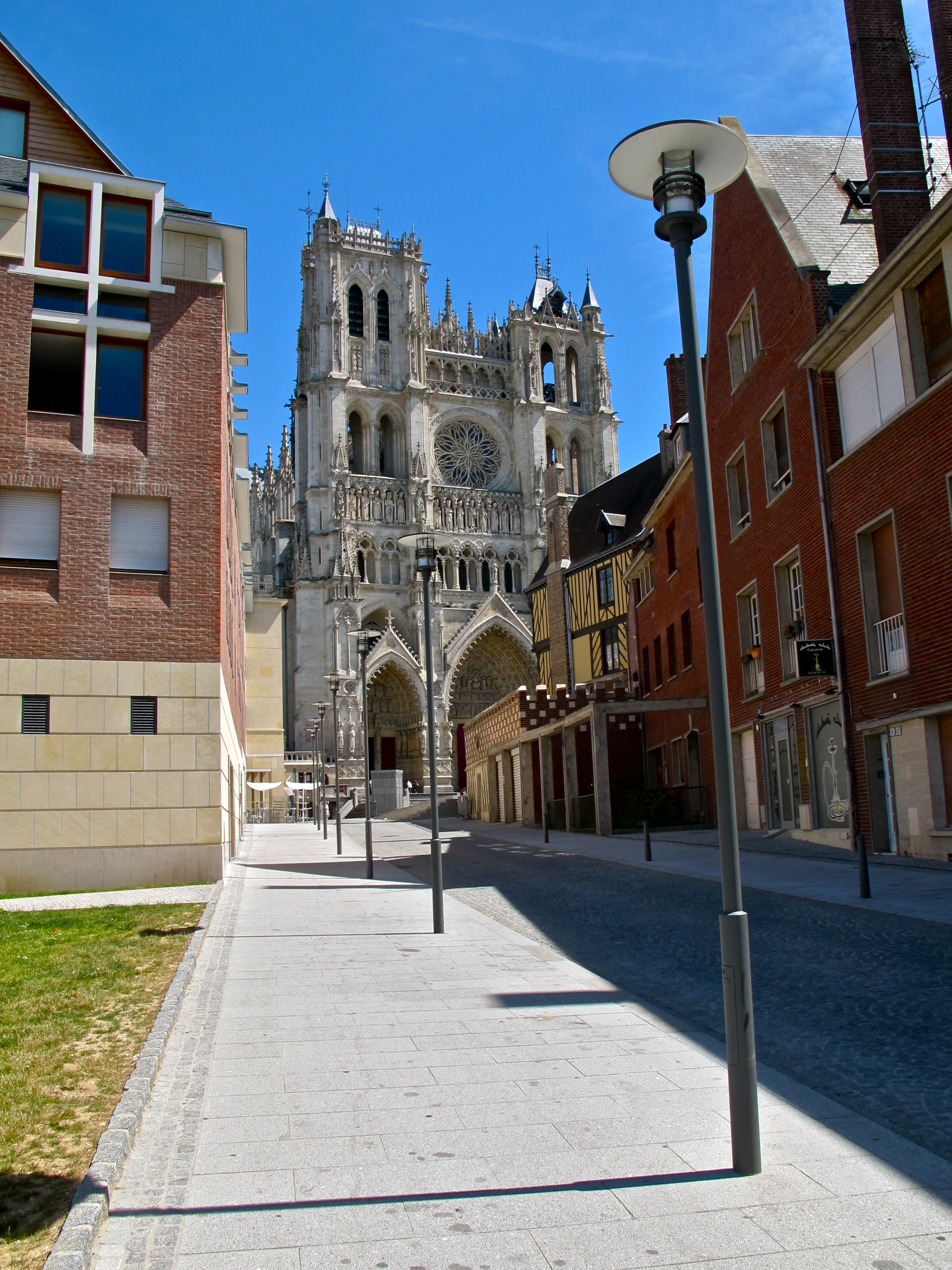
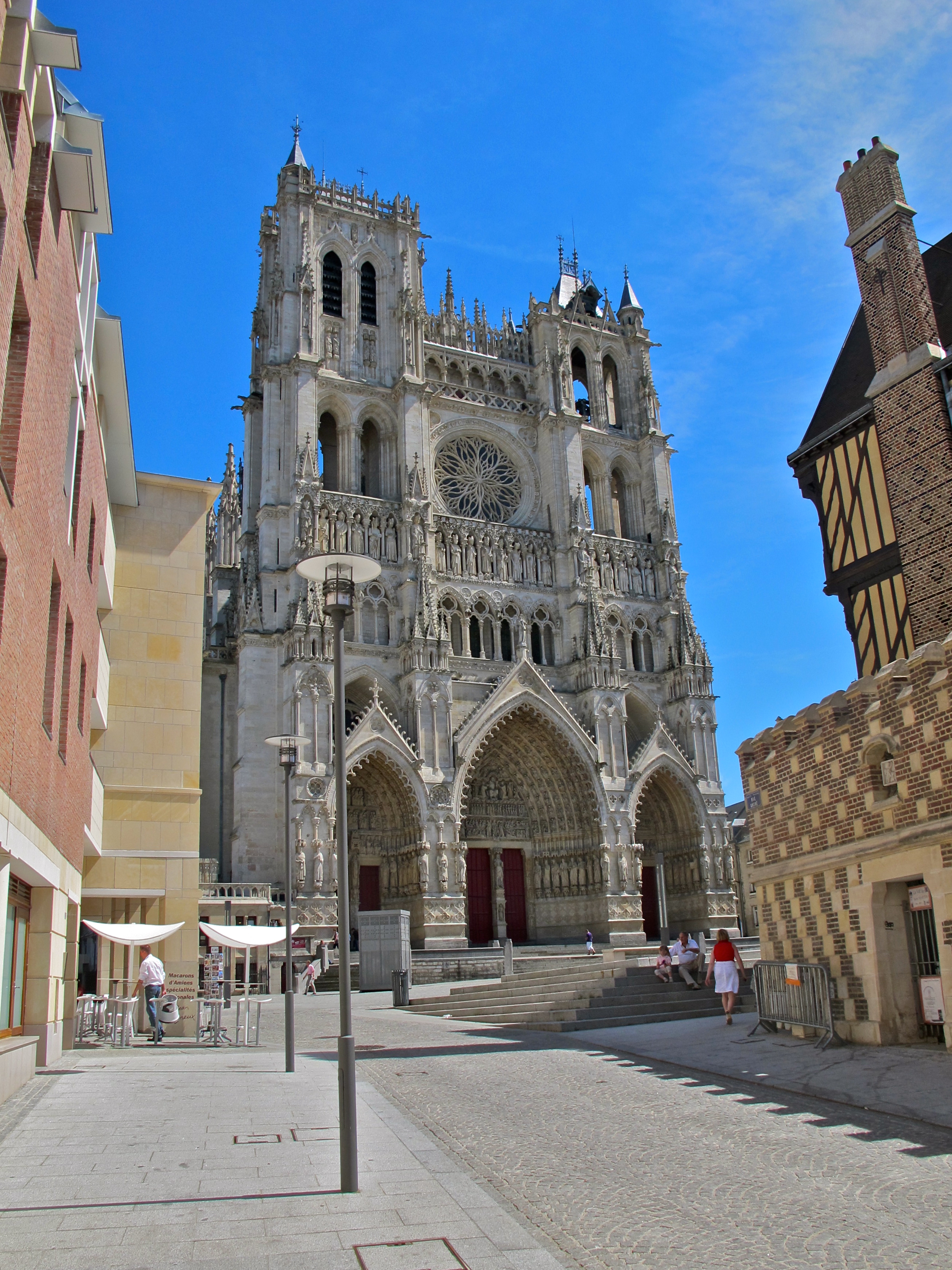
The
Cathedral (Notre Dame) is the largest in France, containing
7,700 square meters (82,882 square feet). It was the model for
the Cathedral of Cologne, which will be discussed when we get to
Germany (see Chapter Ten below). The Cathedral was begun in 1220 to
replace an earlier church destroyed by fire two years earlier. The
architects were Robert de Luzarches, Thomas de Cormont, and Regnault
de Cormont, son of Thomas. The structure was just about completed
within fifty years. The façade, however, was not completed until
the 15th century.
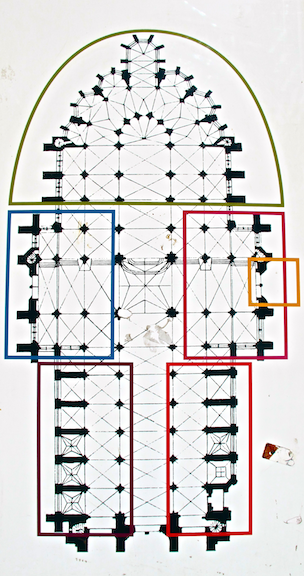
The
plan, with accompanying time line of present-day renovation began
with the purple area, the north side of the entrance nave area. This
was completed in 2003-2004, and work will progress through the green
area, the chevet, to be accomplished bewteen 2011 and 2015.
Statistically,
the external length is 145 meters (476'). The width of the nave is
approximately 47 meters (155'), and at the transept area is about 70
meters (230') wide..
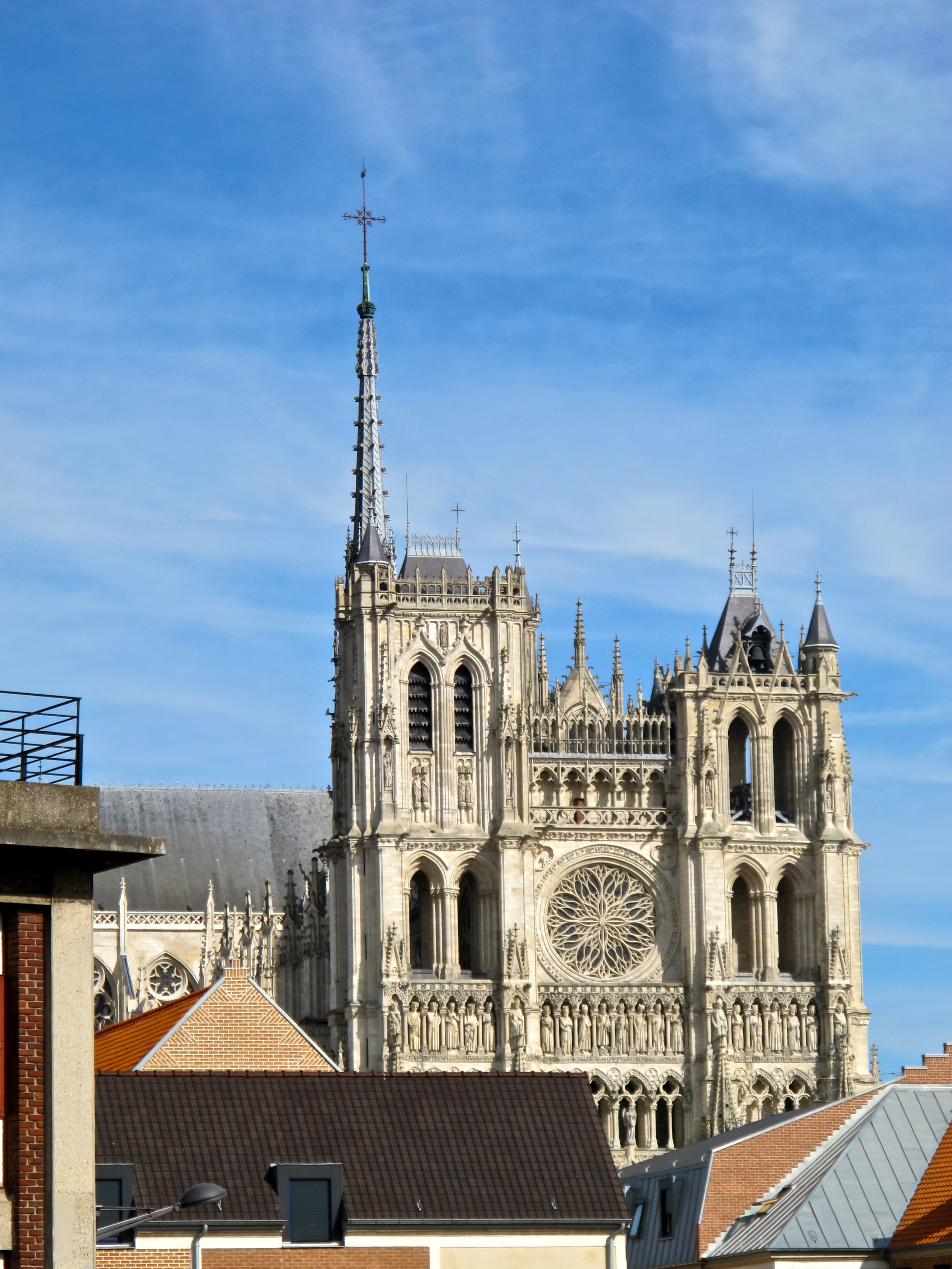
Stepping
back to our hotel, to get a higher perspective, we see that the two
western towers, quite dissimilar, barely rise above the nave roofing;
their heights: the south tower (on the right) dating from 1366,
measures 65 meters (213') in height, while the north tower (on the
left) completed in the beginning of the 15th century,
measures 66 meters (217') high.
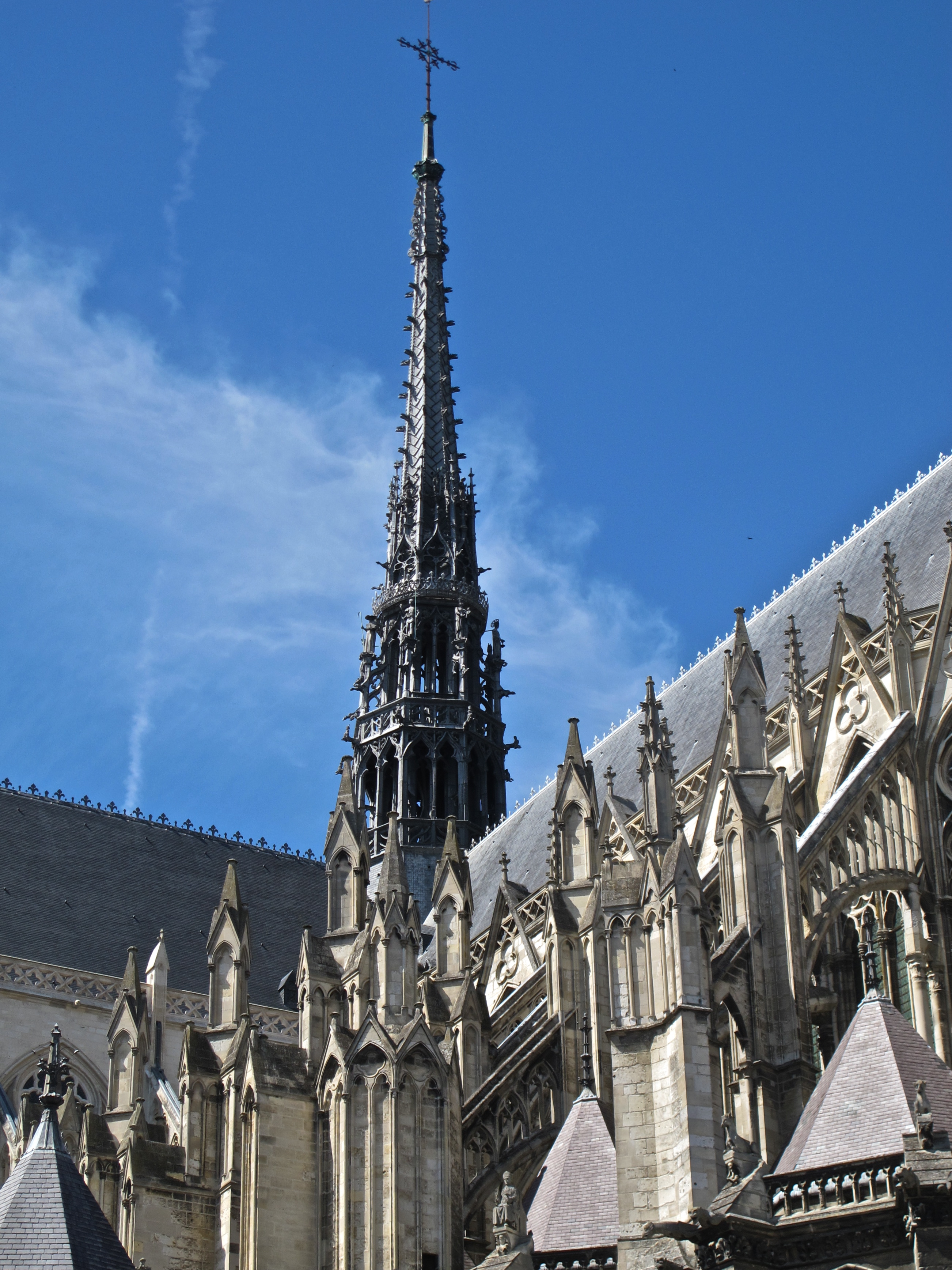
As
seen from the southeast, the spire over the crossing (the flèche)
soars to 112.7 meters (370'), and dates from 1529.
The
main churches built in this period in France have with minimal, if
any, exception oriented their site design so that the entrance is on
the west, and congregants face the altar and the Holy Land. The
Parisian Notre Dame was the influence for the western façade. The
portals have a profusion of sculptures, mostly representing both Old
and New Testaments.
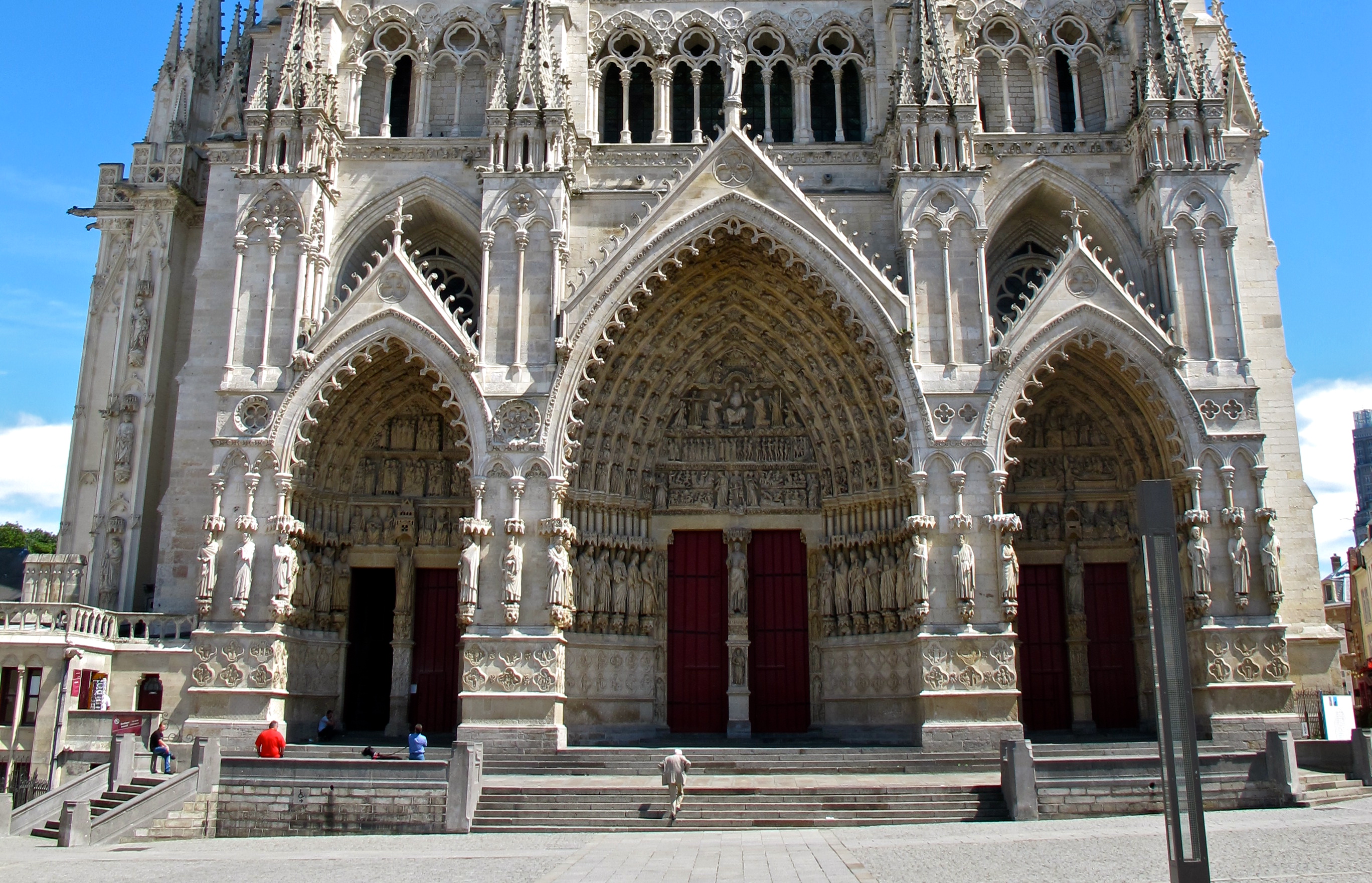
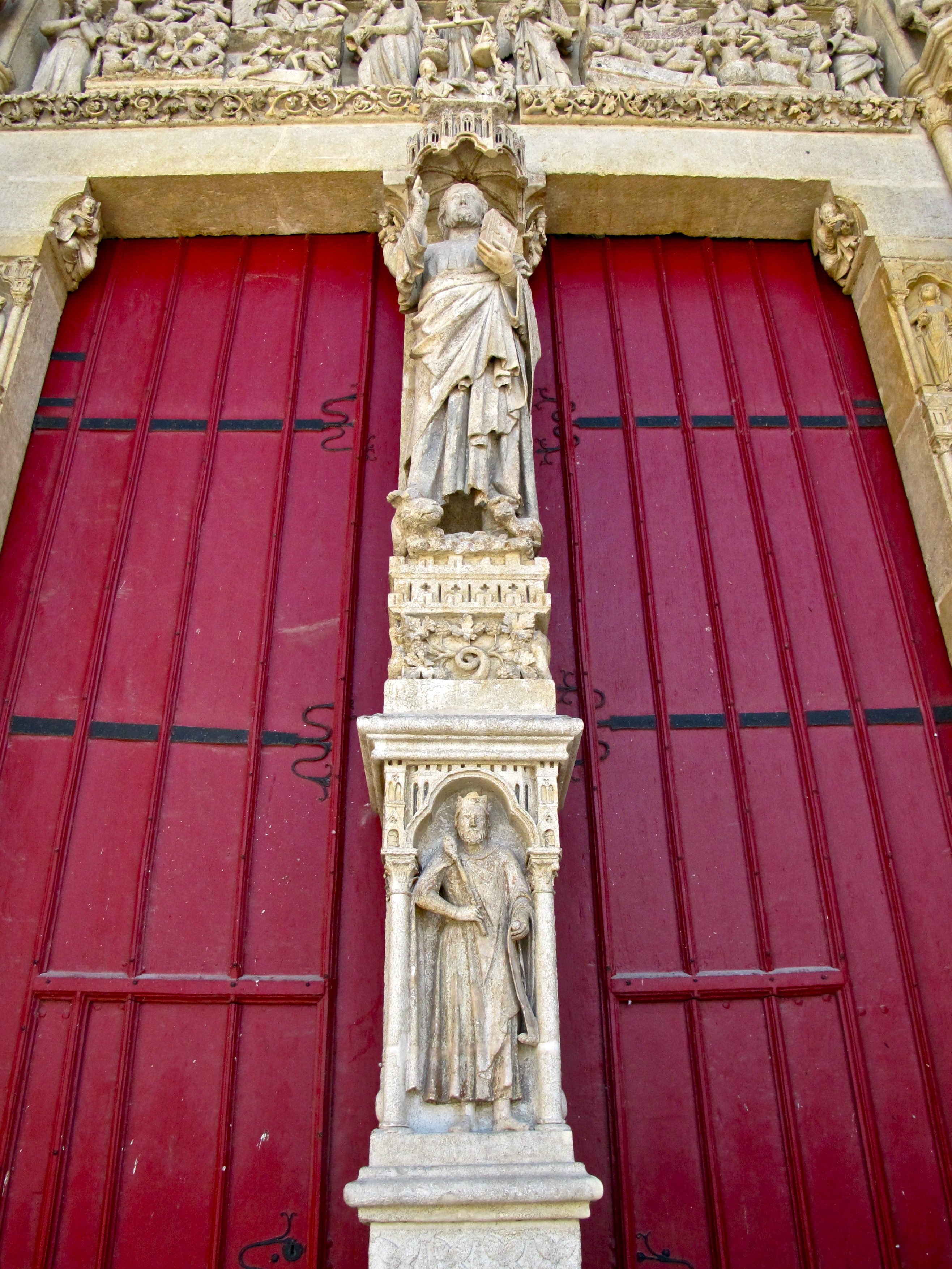
The
dividing
central door jamb,
known in historical circles as a “trumeau,”
shows a resurrected figure of Christ holding a book in his left hand,
while his right hand
is raised in blessing. The positioning of the figure is such that it
towers over those entering the cathedral, while the figure itself
stares impassively into space. The figure has, apparently, triumphed
over evil, as shown by a lion and snake under his feet. Done
in 1240, the figure is in the act of blessing, and is venerated by
the townspeople, who depict the statue as “Beau
Dieu d’Amiens.”
The side jambs contain figures of apostles and prophets.
Additionally,
the composition rests on a crowned figure within an arch setting,
identified as either King David or King Solomon, from whom it is
purported Christ was descended.
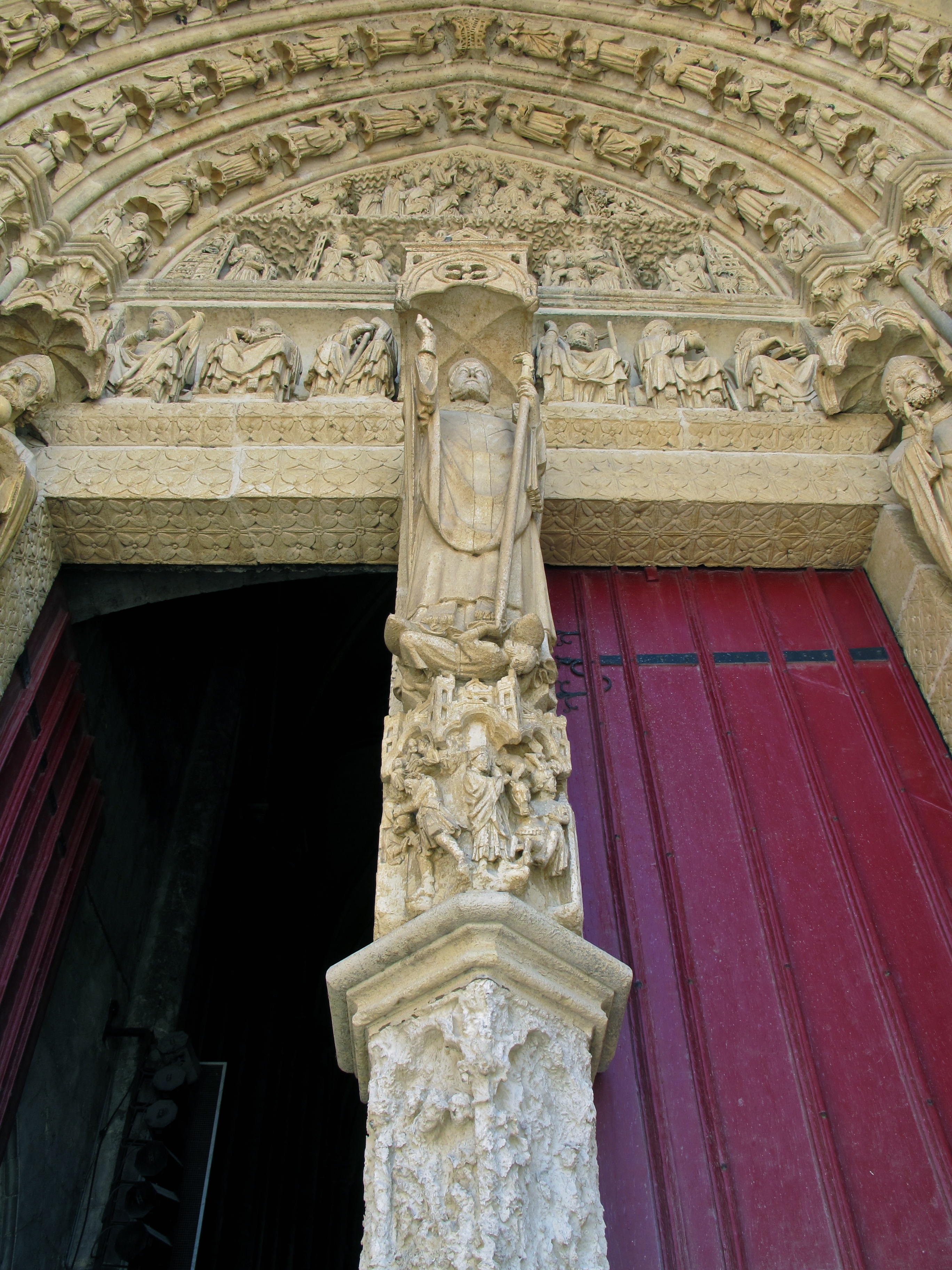
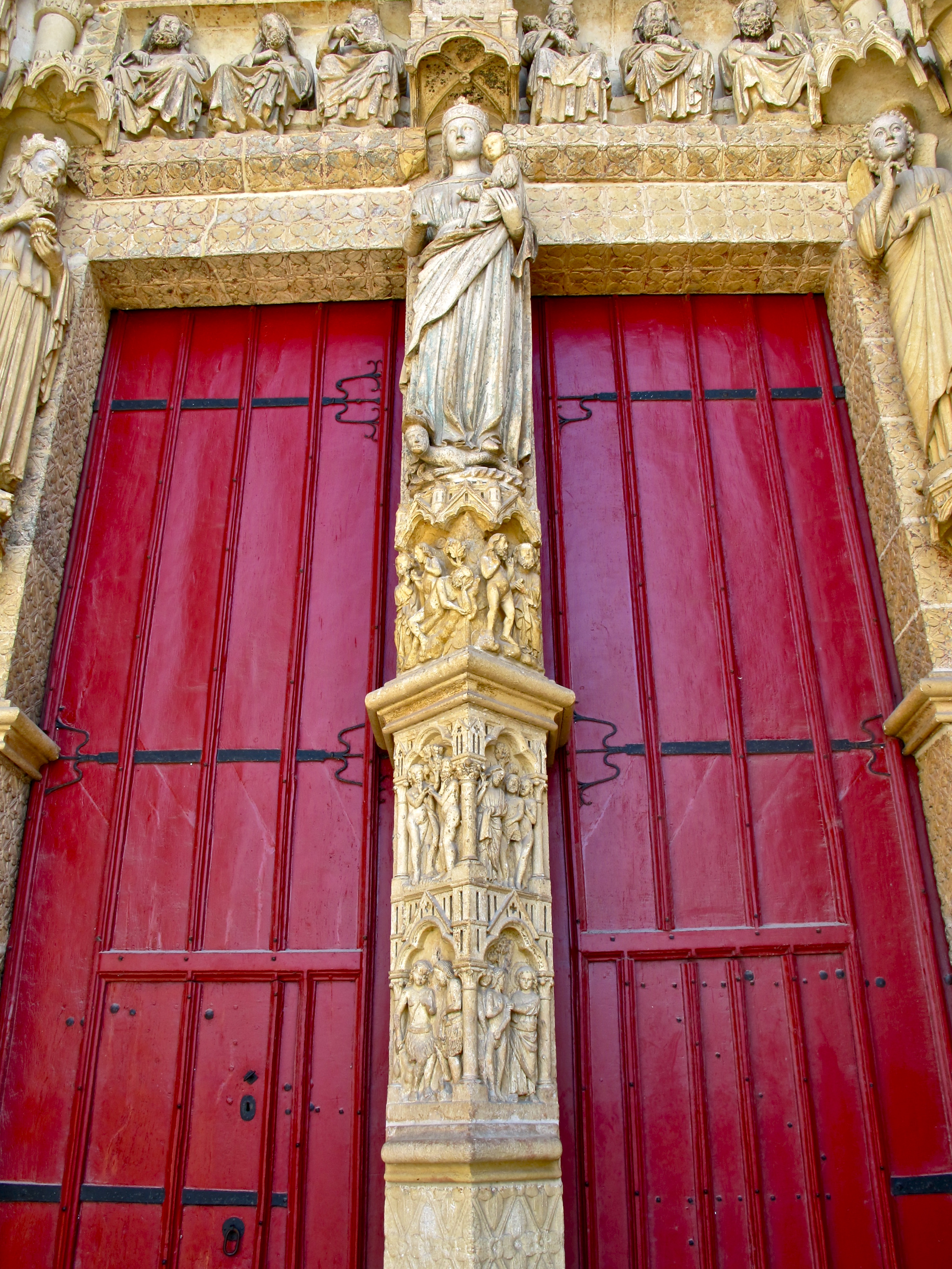
The
right hand portal (temporarily under scaffolding) is dedicated to the
Virgin Mary, while the left portal (above) shows St. Fermin.
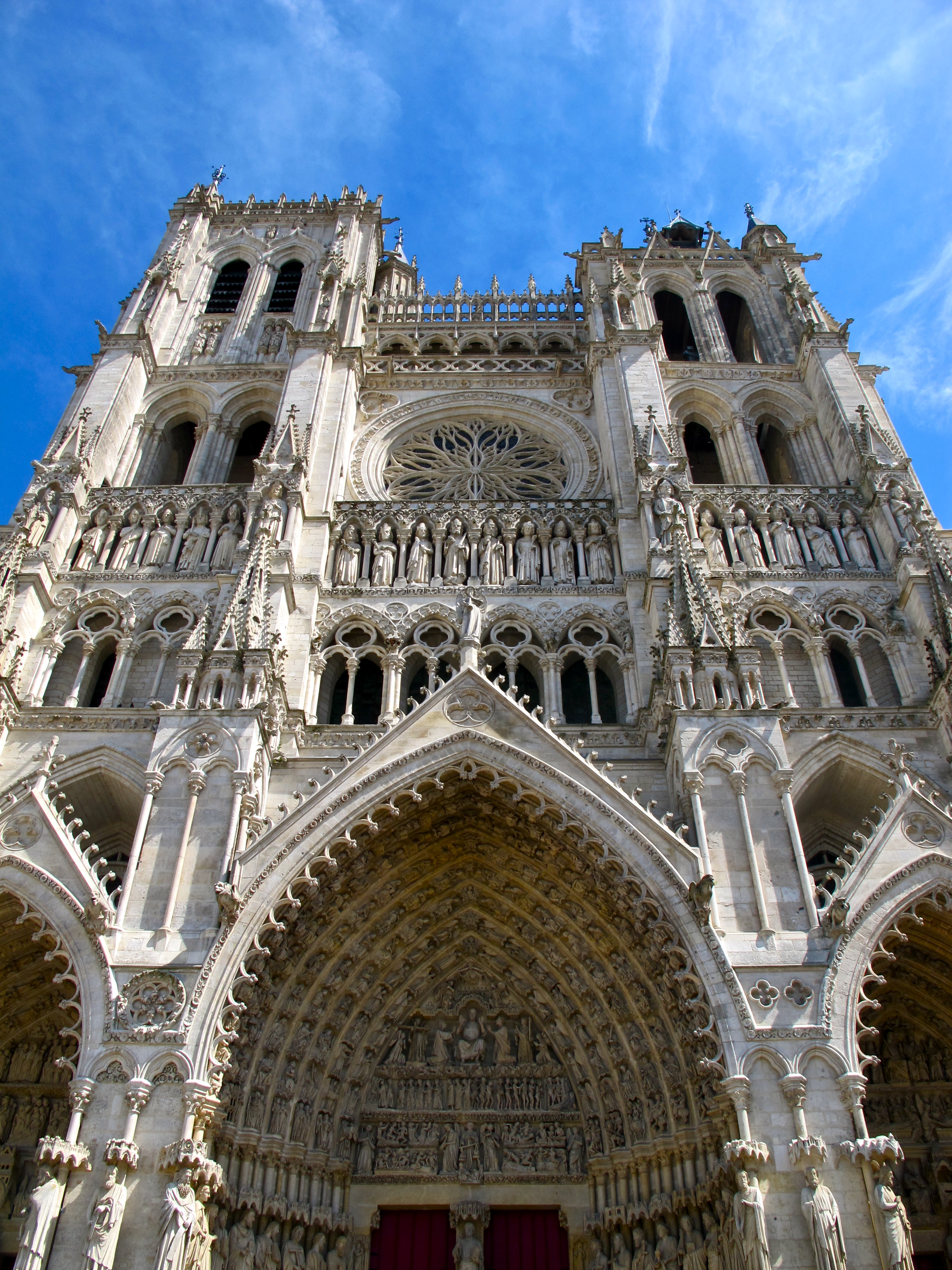
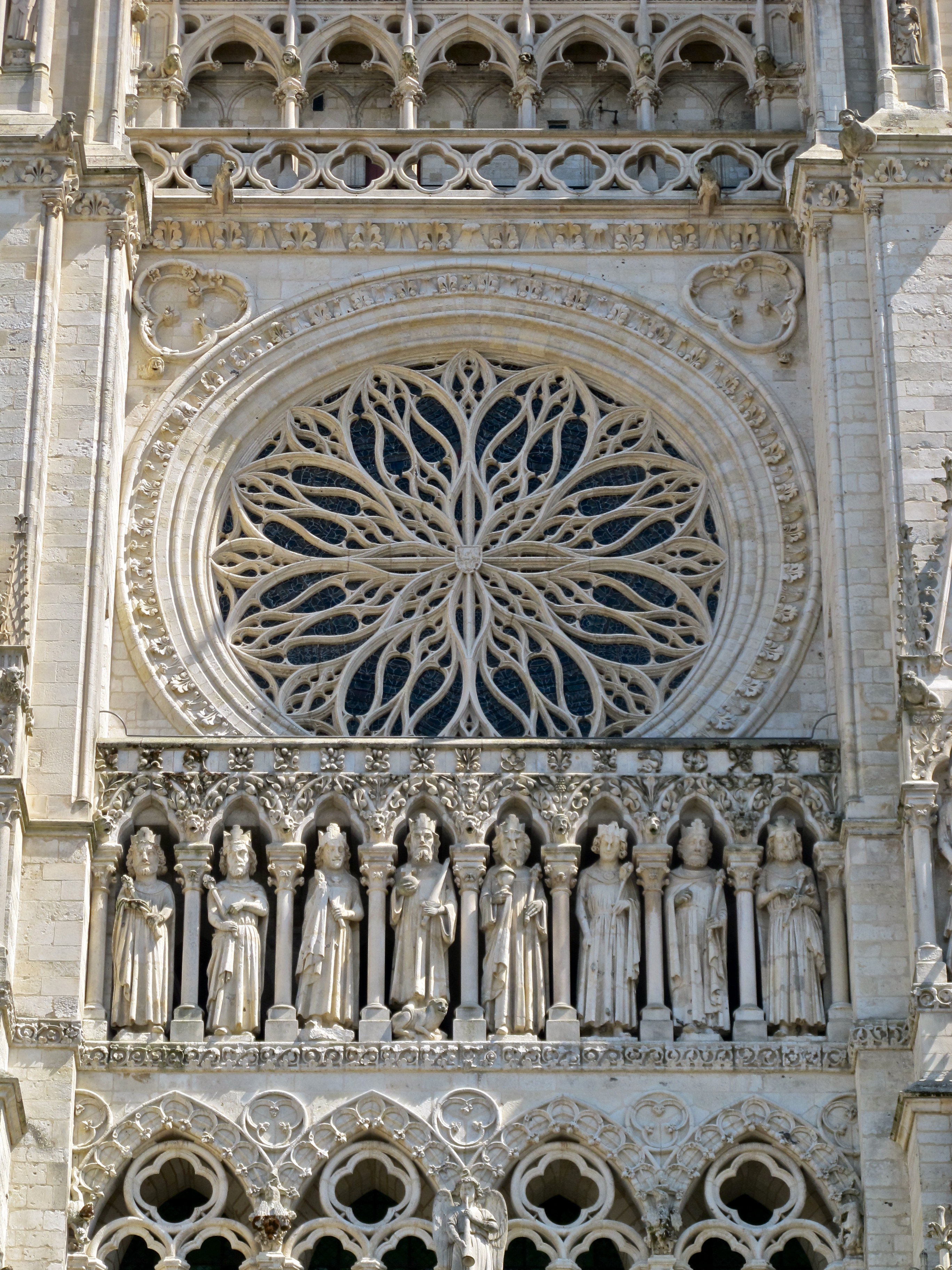
An
open arcade above the three portals is surmounted by a gallery
containing twenty-two statues of French Kings, and above all of this
is a rose window known as the “rose of the sea.” Sources indicate
its size as between 11 meters (36') and 13 meters (43') in diameter.
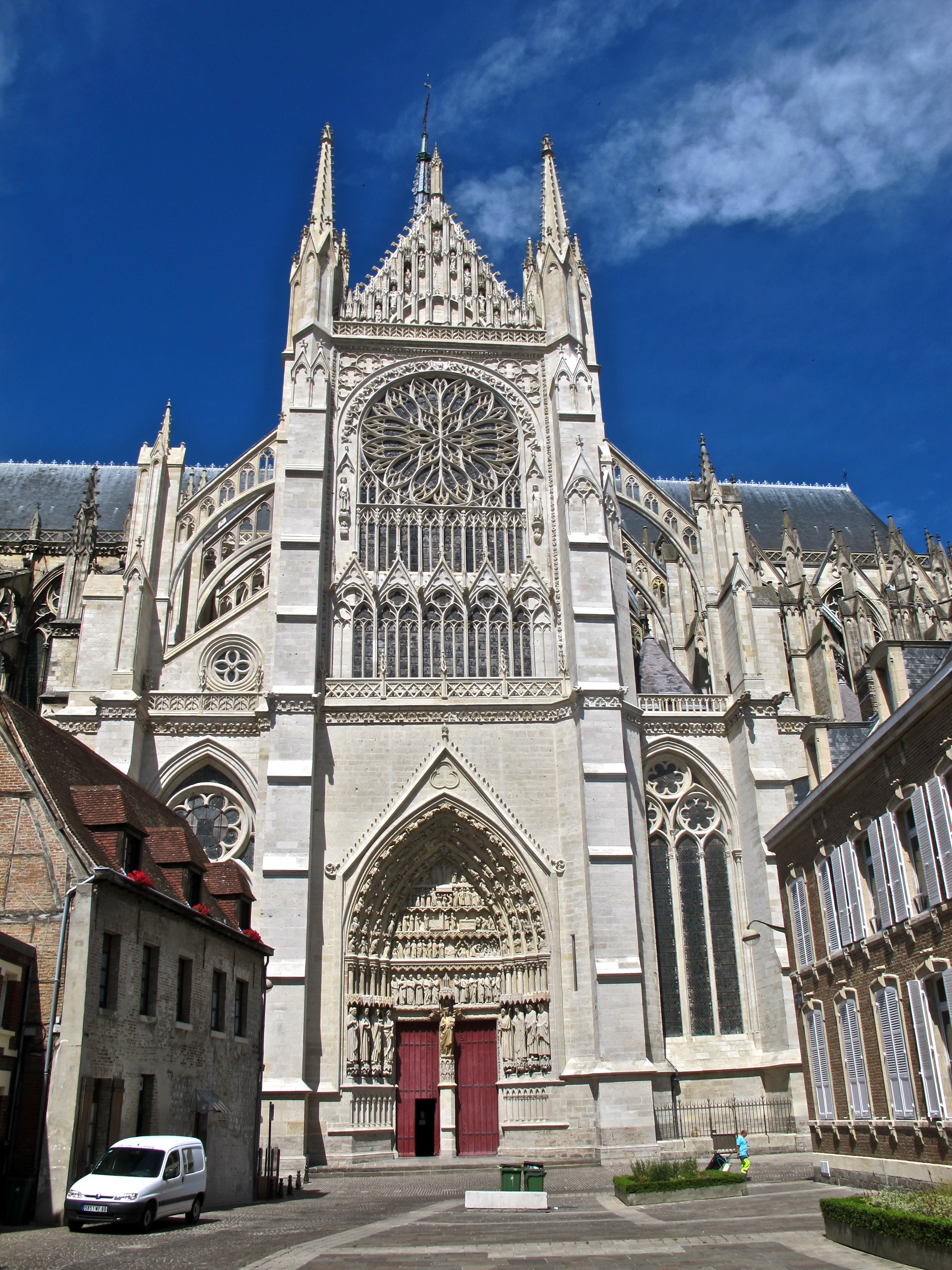
The
southern transept entrance.
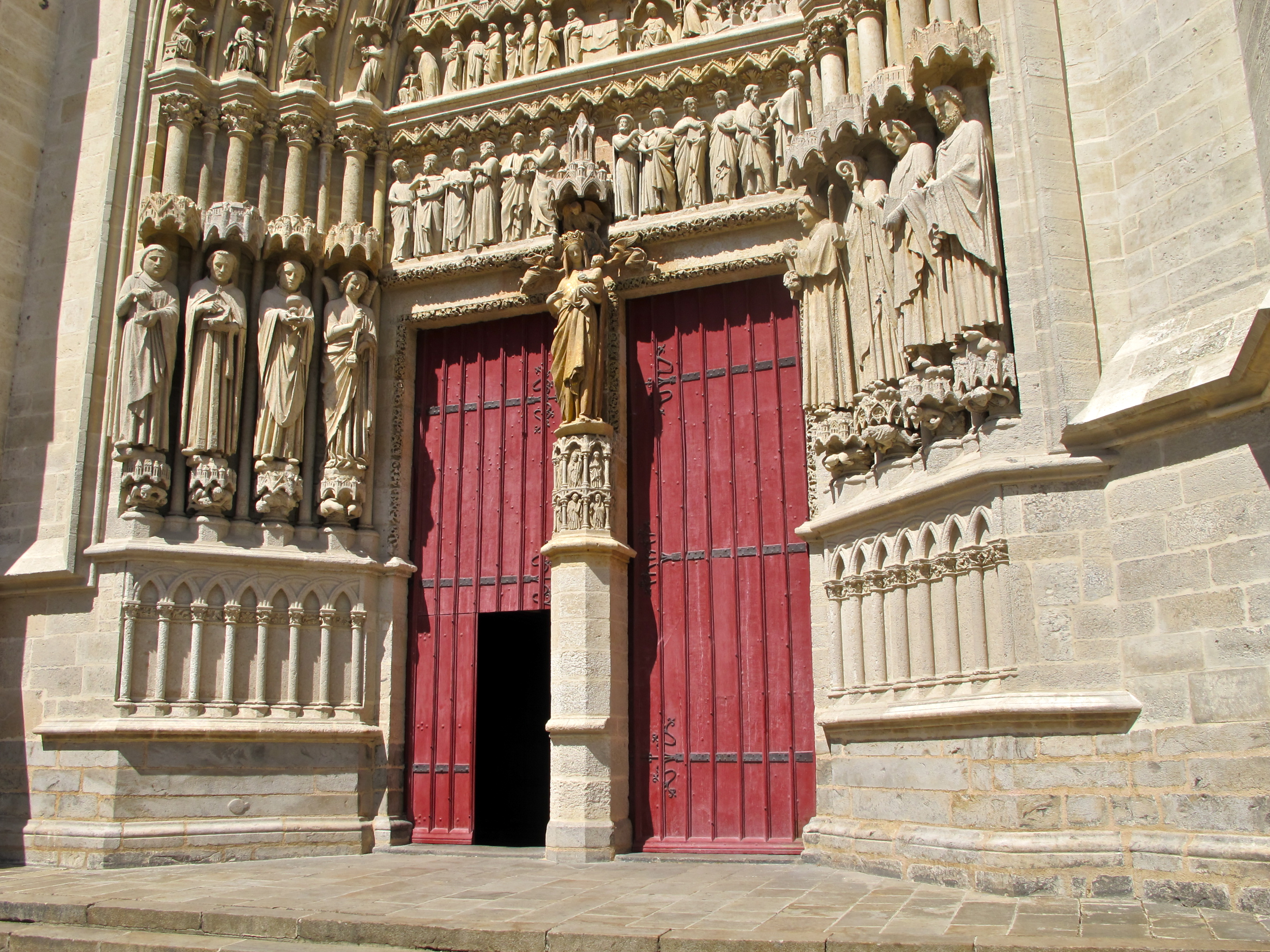
The
center portal post of the southern transept is famous for what
was a gilded statue of the Virgin (“Vierge Dorée). The gilding
might be gone, but the image remains. One of
the finest sculptures on the church is this Madonna, known as the
'Golden
Virgin;'
it was used as the model for many later Madonna statues throughout
Europe. Surrounding sculptures depict the life of St.
Honoré (Honoratus), a bishop of Amiens.
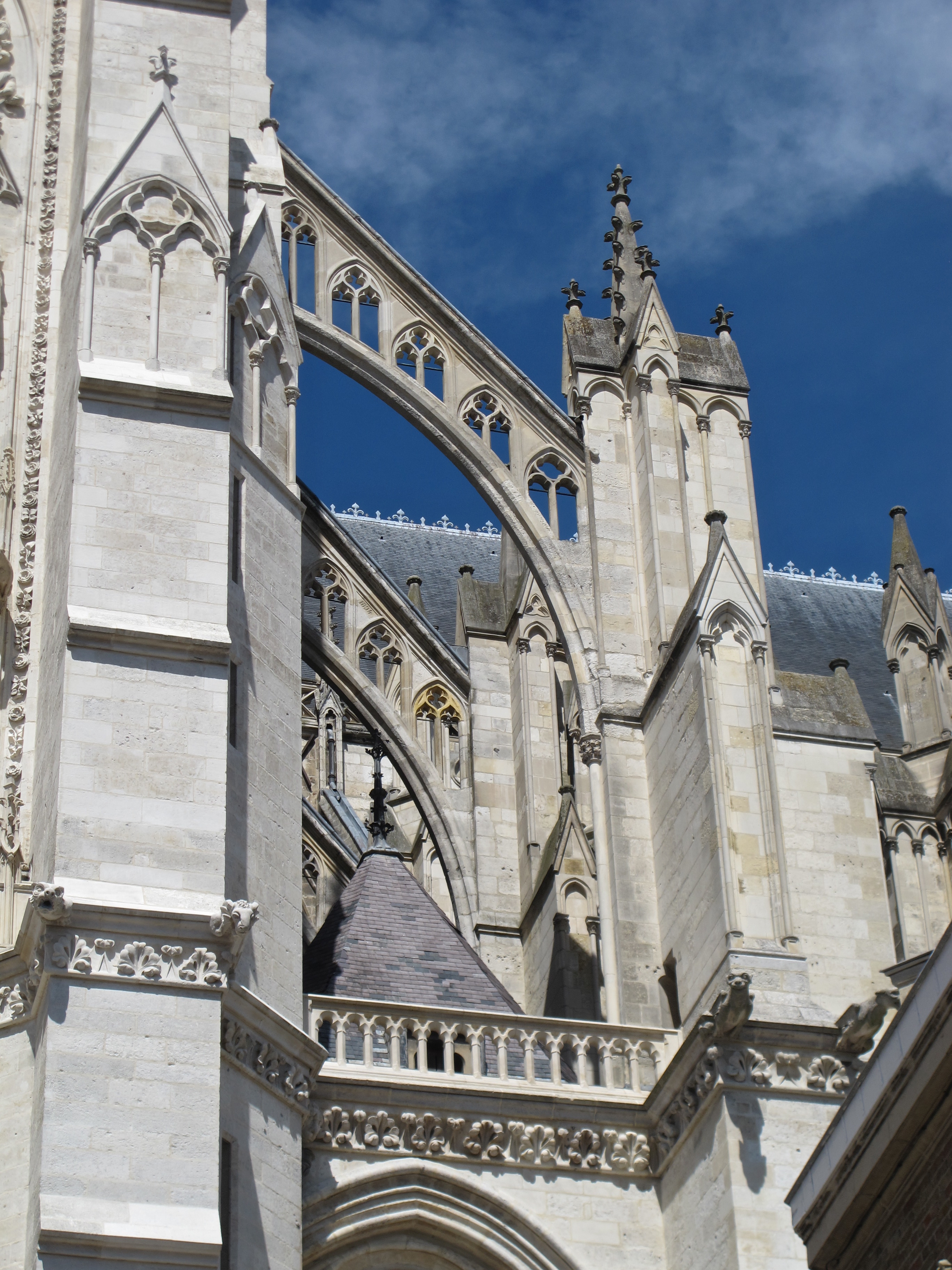
The
flying buttresses pinpoint the necessary support location on
the upper walls, taking those forces down to a vertical pier. The
flying buttress is actually broken into two segments – upper and
lower, very much as we do with modern trusses; witness the intricate
arches connecting the upper and lower segments. Compare this with
Louis I. Kahn's Medical Services Building for the American Federation
of Labor in Philadelphia, built in 1954, but since demolished (1974)
to make way for an expanded expressway. In that structure Kahn split
his beams into their horizontal compressive / tensile
segments, possibly for the first time in modern architectural
history. Also see works by Romaldo Giurgola, fellow Professor of
Kahn's and quiet disciple of Kahn. I was fortunate to have been a
pupil of each. But the precedent is here in France and elsewhere in
Europe.
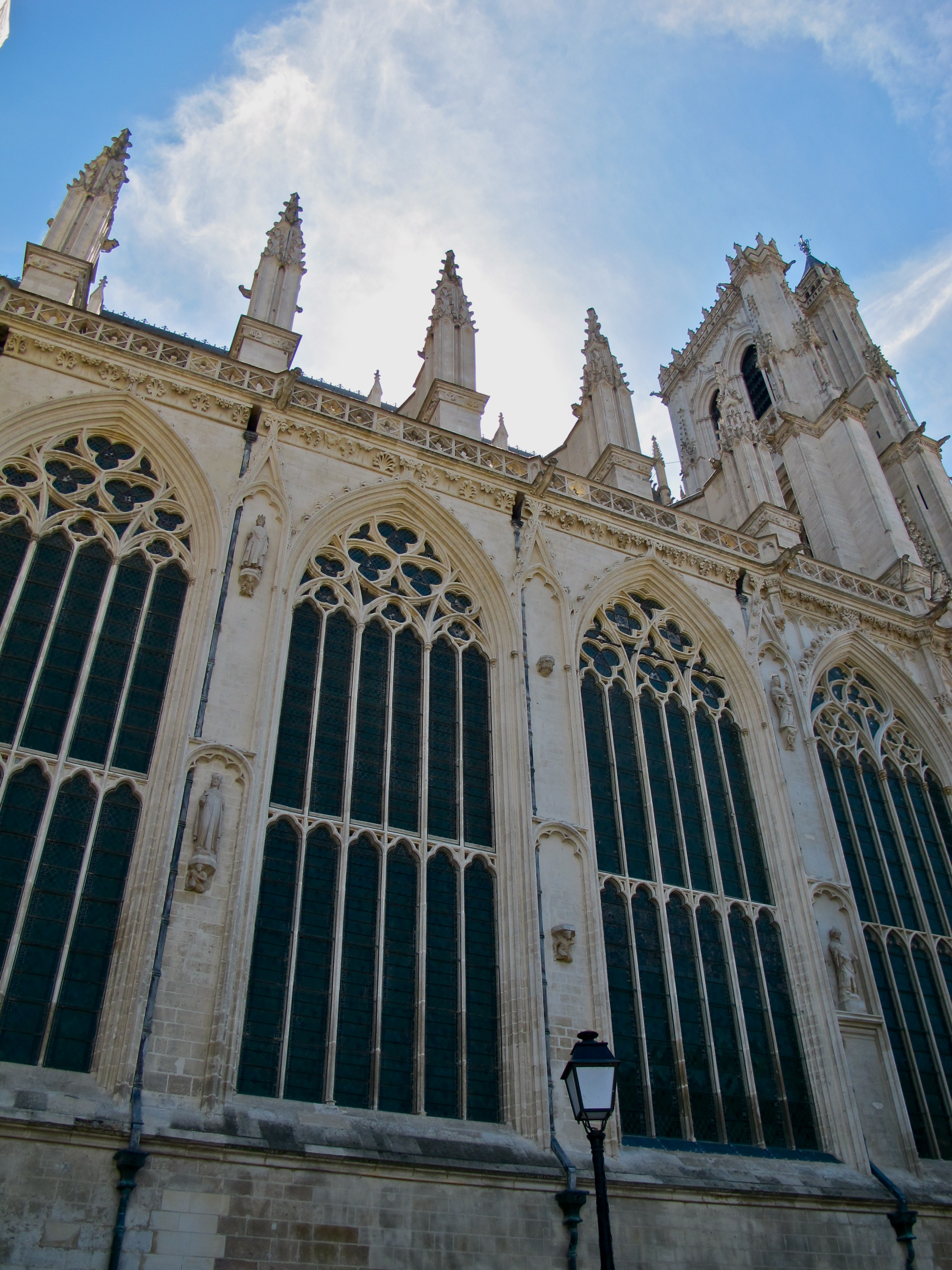
The
delicate lace-like appearance belies the nature of the stone
construction. Not only were the Gothic builders masters of
construction techniques, they crafted their works in an ethereal
manner. Additionally they used the least amount of material
necessary. This not only gives us the actual structural
skeleton, which is what we see, but saves quarrying, transporting,
lifting and placing unnecessary material. The reality is that the
structural skeleton developed into something aesthetically beautiful
in its own right.
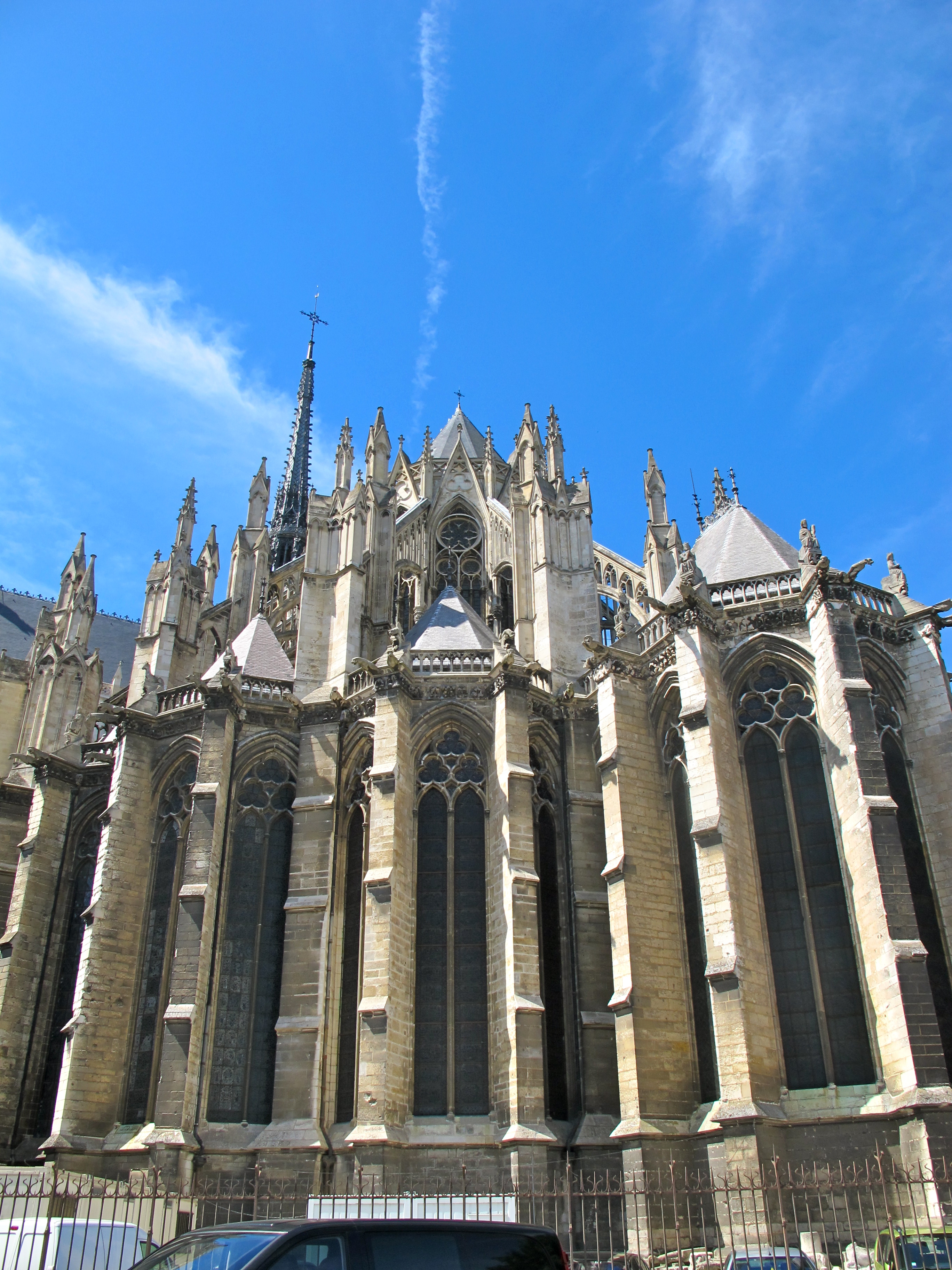
The
chevet, or eastern end, showing
how Gothic masons created structural identity in the external piers
and buttresses, which can be seen to grow
in dimension as they descend
from the roof-line. In other words, Gothic
architecture reveals the magnitude
of prevalent forces and follows
that buildup with greater structure
as required, but only
as much as is required!
And you will notice that the structure has been turned at right
angles to the actual building, a hallmark of Gothic design, providing
so much more space for story-telling stained-glass.
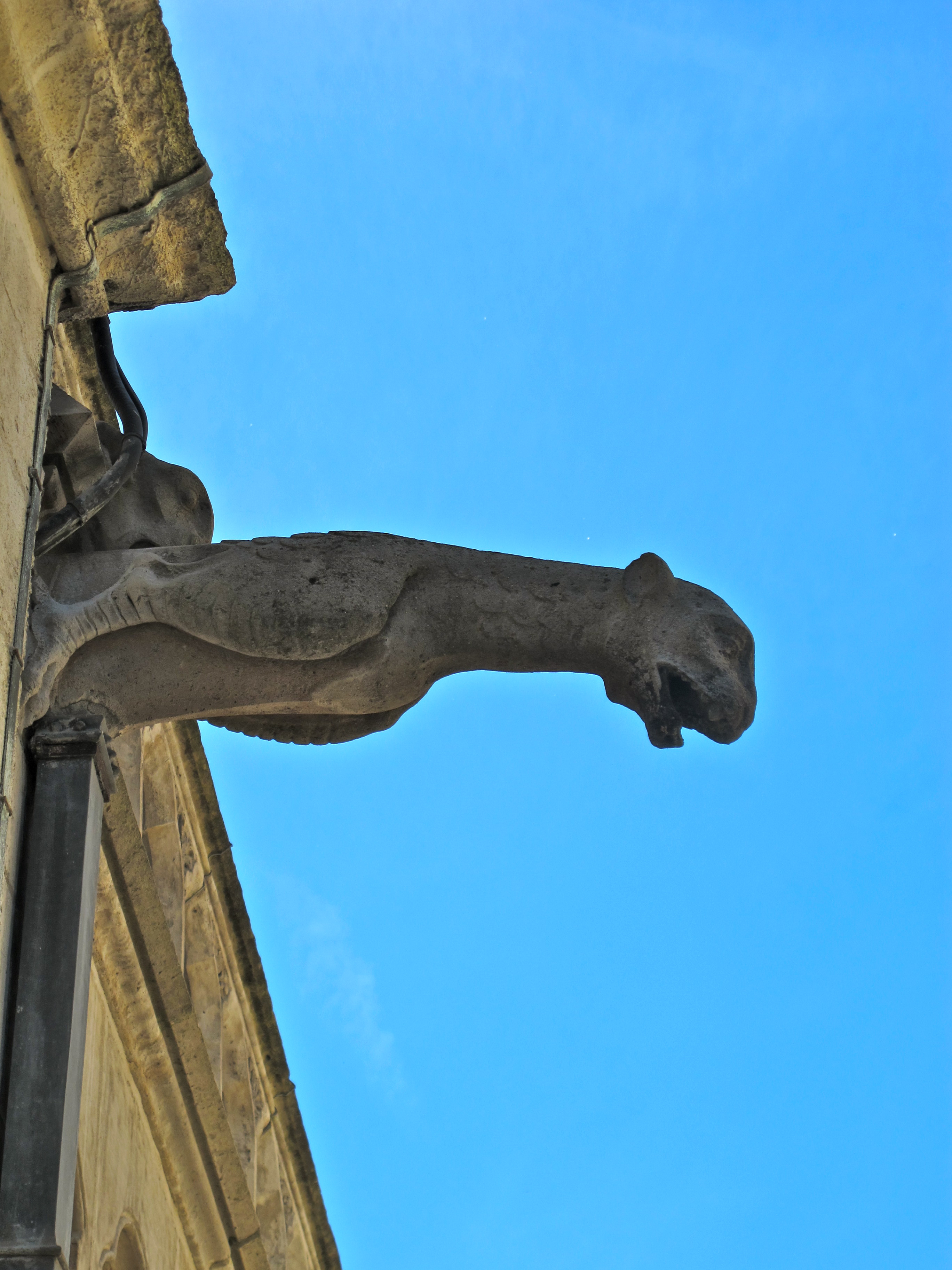
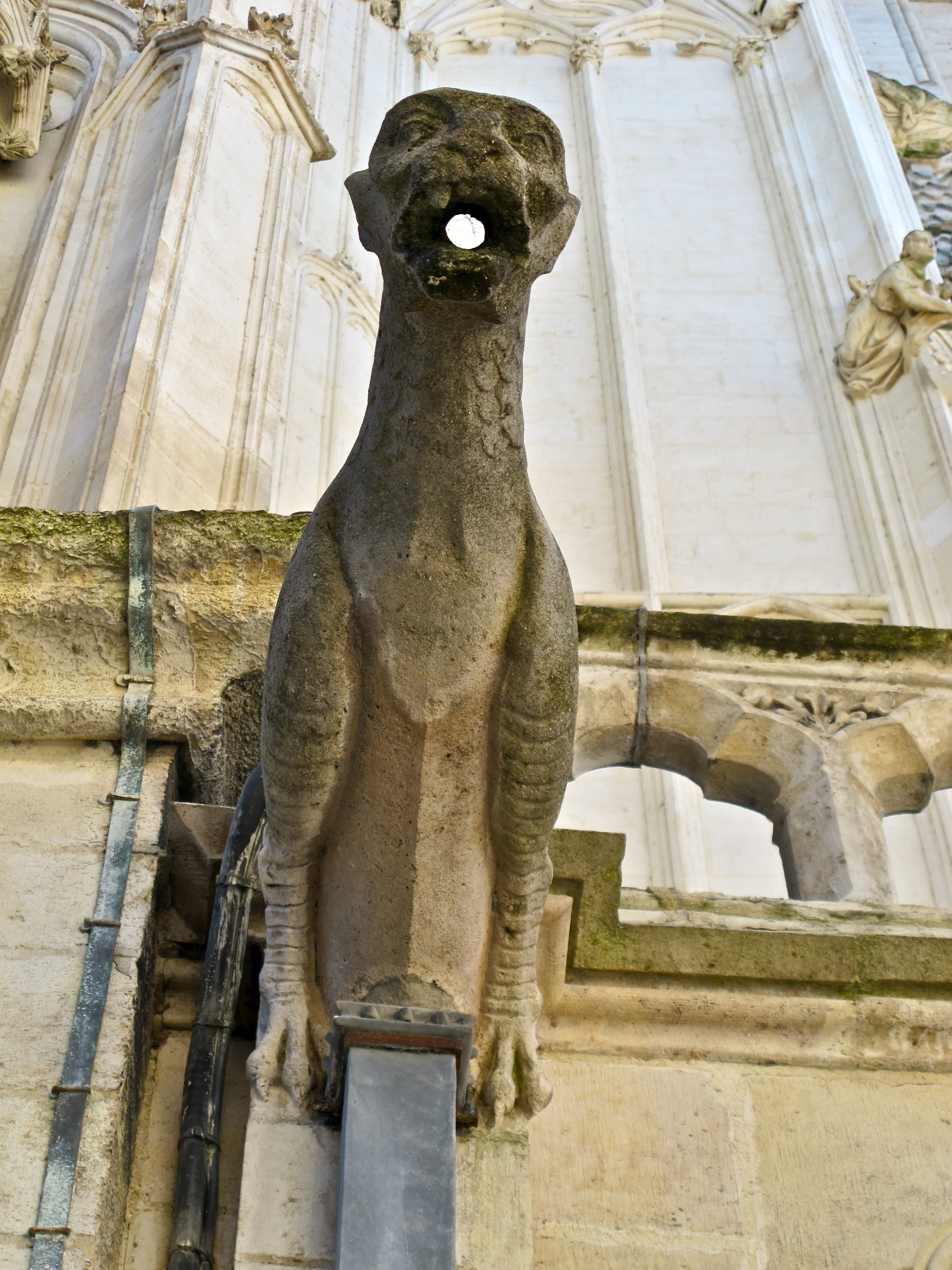
Before
we go any further, let us look at the menace above, under which we
must pass to enter the “sanctuary” of the church. A lone
gargoyle leers ominously at us. It's open mouth reveals it's true
nature, however, that of a water spout.
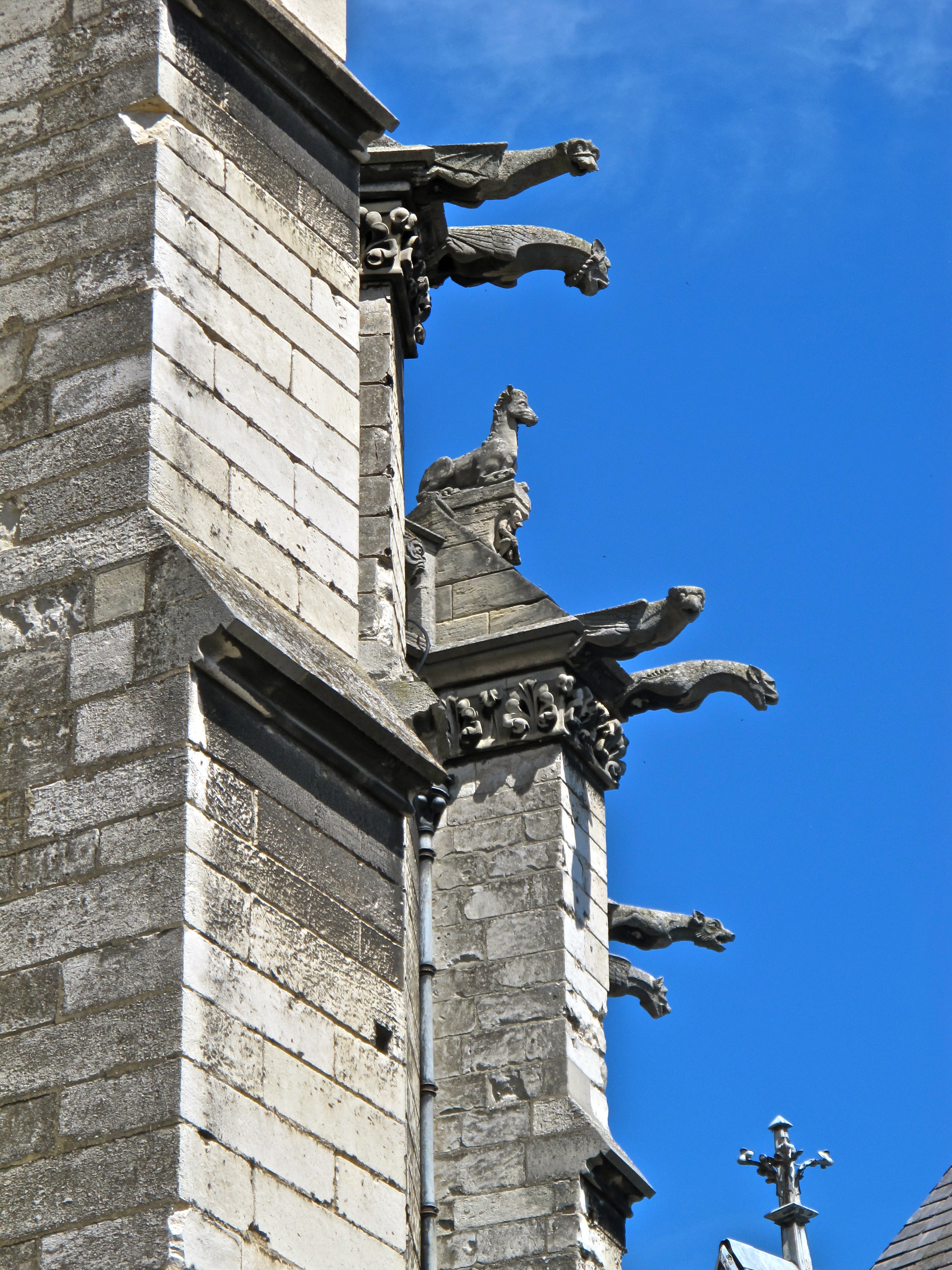
Regardless
of their actual intention, this is a truly frightful sight. A
seemingly organized pack of creatures from hell on the lookout for
unsuspecting passersby.




















